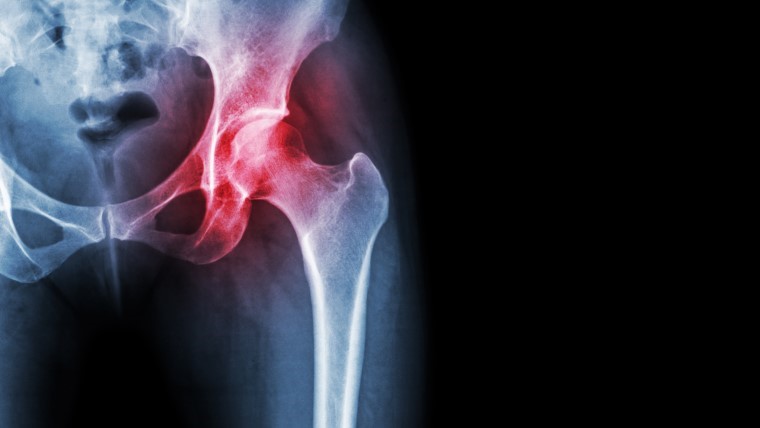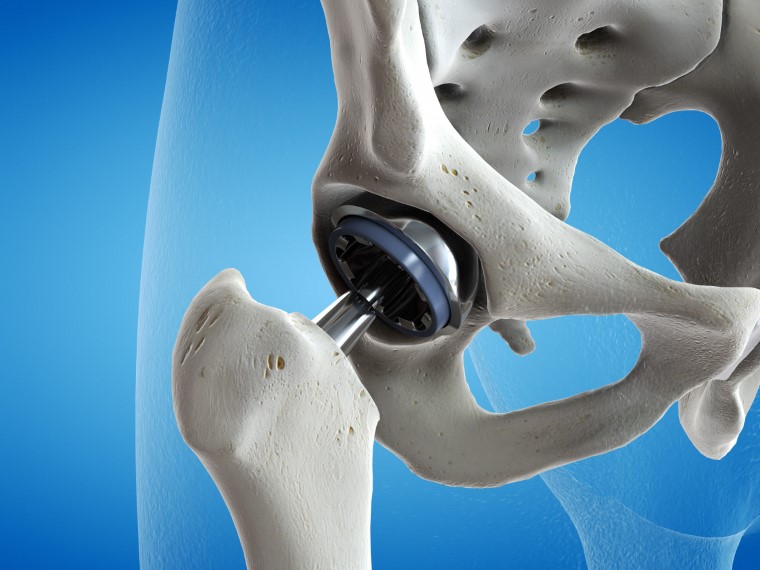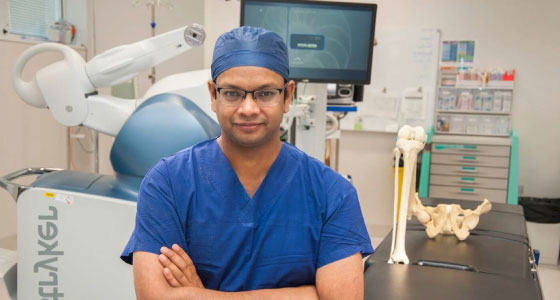The hip joint comprises a “ball and socket”. The “ball” refers to the head of the femur (thigh bone), and the “socket” refers to the acetabulum. The surface of the joint is covered by a smooth articular surface to ensure smooth gliding and pain-free movement. Damage to any of the sections of the hip joint through direct trauma or a result of degenerative disease can lead to hip fractures.
Treating a hip fracture aims to relieve pain, improve muscle strength, and allow you to regain movement. If you are suffering from debilitating hip pain, you may require hip fracture treatment. Melbourne residents can contact us at their earliest convenience to discuss their treatment options with Dr Siva Chandrasekandra.
What is a hip fracture?
A hip fracture is a break that occurs in the upper part of the thigh bone. In the elderly, hip fractures occur as a result of weak bones caused by osteoarthritis. In younger, more active individuals, hip fractures are often caused as a result of a traumatic injury.
Types of hip fracture
Hip fractures can either be partial, complete, or hairline. Hip fractures are often characterised by the specific location of the break and the type of break experienced. The most common types of hip fracture are:
- Femoral neck fracture - Fractures can occur directly in the femoral neck. This type of fracture is more common among adults and is often related to osteoporosis. A femoral neck fracture may cause complications as the break may cut the blood supply to the femoral head.
- Intertrochanteric hip fracture - The thigh bone comprises two bony processes - the greater and lesser trochanter. This fracture occurs in between the greater and lesser trochanter.
- Subtrochanteric hip fracture - A fracture in the upper part of the femur below the greater and lesser trochanters.
- Femoral head fracture - This type of fracture directly affects the hip joint. It is almost always caused by a traumatic hip dislocation or injury.

A hip fracture can occur anywhere on the hip. The extent of the break depends on the forces involved.
Causes of hip fractures
The majority of hip fractures occur in older adults and are usually caused by falls. As we age, we are more likely to develop a degenerative bone disease such as osteoarthritis which causes progressive damage to our soft tissues and bones, making them much easier to break. Young people are more likely to experience a fractured hip as a result of trauma or sporting related injury. Other factors that contribute to your risk of developing a hip fracture include:
- Being female
- Family history
- Dietary deficiencies of calcium and vitamin D
- Smoking
- Underlying medical conditions
- Certain medications (long-term effects of steroids)
Symptoms of hip fractures
Most hip fractures are acutely painful. The pain is often localised to the groin and upper thigh. The most common symptoms associated with a hip fracture include:
- Pain in the lower hip/groin/upper leg
- Unable to bear weight on the injured leg
- Redness or inflammation on the affected site
How is a hip fracture diagnosed?
To diagnose your hip fracture, your orthopaedic surgeon will firstly go through your medical history to identify whether you have any underlying conditions and determine the cause of your pain.
Following this, Dr Siva will perform a physical examination to assess your function and check for any other injuries that may have occurred. Those who experience a hip fracture will often present with the injured leg appearing shorter than the opposite leg, and the leg may be twisted and bruised.
Imaging tests are then carried out to confirm a diagnosis. Dr Siva will refer you for an X-ray, followed by a magnetic resonance imaging scan (MRI) if he suspects any possible ligament damage. Most hip fractures can be diagnosed using an X-ray.

A hip fracture is a break in the upper quarter of your femur. Dr Siva will go through your X-ray findings and discuss with you the relevant treatment options.
Treatment options for hip fractures
Most hip fractures require surgical treatment performed by an orthopaedic surgeon. A very small group of patients may be treated using conservative methods depending on the nature of their fracture.

Non-surgical
Non-surgical or conservative treatments are only offered to healthy individuals with a non-displaced hip fracture. Conservative treatments may include:
- Physical therapy
- Rest
- Pain-relieving medications (NSAIDs, paracetamol)
- Use of walking aids

Surgical
Surgical treatment of a hip fracture is offered within the first 1-2 days. The type of surgery you will be offered is based on the bones and soft tissues affected or on the level of displacement that has occurred. The most common surgical treatments are:
- Hip replacement surgery - a hip replacement is a surgical procedure that involves replacing the “ball and socket” joint of the hip with an artificial prosthesis. The technique used will depend on your individual characteristics.
- Hip repair - If your “ball and socket” joint has the potential to heal, internal hip fixation may be used instead of a hip replacement. During this procedure, your orthopaedic surgeon will use metal rods and screws to hold your joint in place as it naturally heals. External fixation may be used depending on the nature of your fracture and where the fracture is located within the upper femur.

Hip replacement surgery involves the use of a prosthetic component to replace the femoral head and acetabulum.
How much does hip fracture treatment cost in Melbourne?
The cost of your hip fracture treatment in Melbourne will ultimately depend on the type of treatment you need. Surgical treatments will cost more than conservative methods. The total cost of your treatment factors in the price of the medical team involved and any aftercare you may require. A breakdown of the total cost will be given to you during your initial consultation with Dr Siva.
Suffering from hip pain? Choose MOATI
We here at MOATI believe in applying a patient-centred approach to all care. We specialise in the ailment of the knee and hip injuries, using only the newest surgical techniques to help alleviate your pain and restore your function. We pride ourselves on a fully equipped medical facility that enables us to facilitate your treatment process from start to finish, ensuring your treatment, diagnosis, and rehabilitation can be performed under one roof.

Dr Siva is a highly trained orthopaedic surgeon in Melbourne with many years of expertise in treating knee and hip conditions. Dr Siva is passionate about continuing his professional development. He has over 50 published articles and continues to train and enhance his surgical techniques.
FAQs
Some of the most common questions regarding hip fractures are answered below.
In some circumstances where the hip is not fully displaced, conservative treatments may be offered. However, if more severe hip fractures are left untreated you may experience a number of complications including blood clots and immobility.
Most hip surgery is offered within 1-2 days after a hip fracture. It is recommended that you get your hip fracture attended to as soon as possible.
No, the pain and displacement of the leg will make walking very difficult. Walking may also compromise your joint and lead to further damage.
Yes, a hip fracture is serious and can cause significant damage if left untreated. Hip fractures may lead to complications and can even cut off the blood supply to certain nerves.
